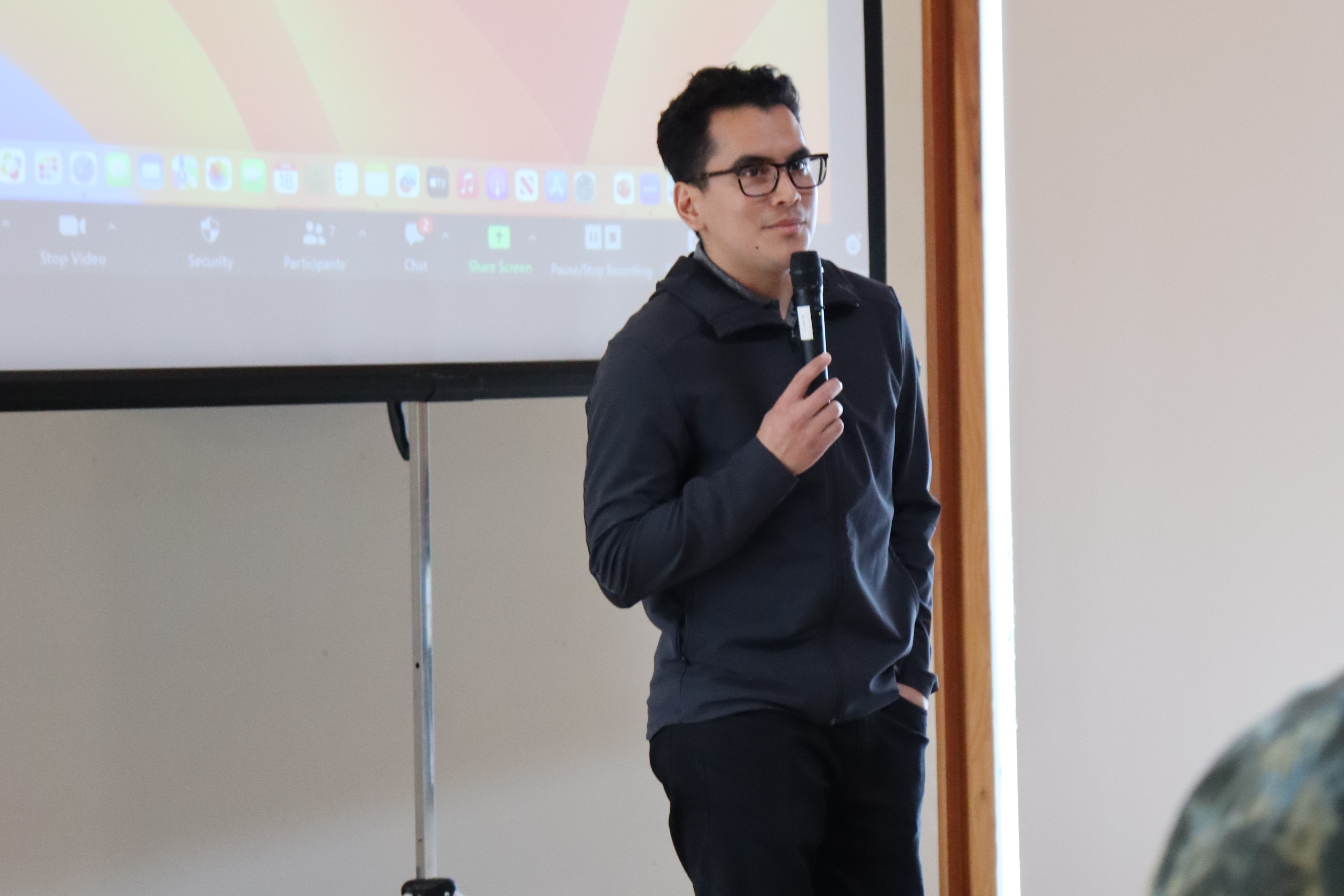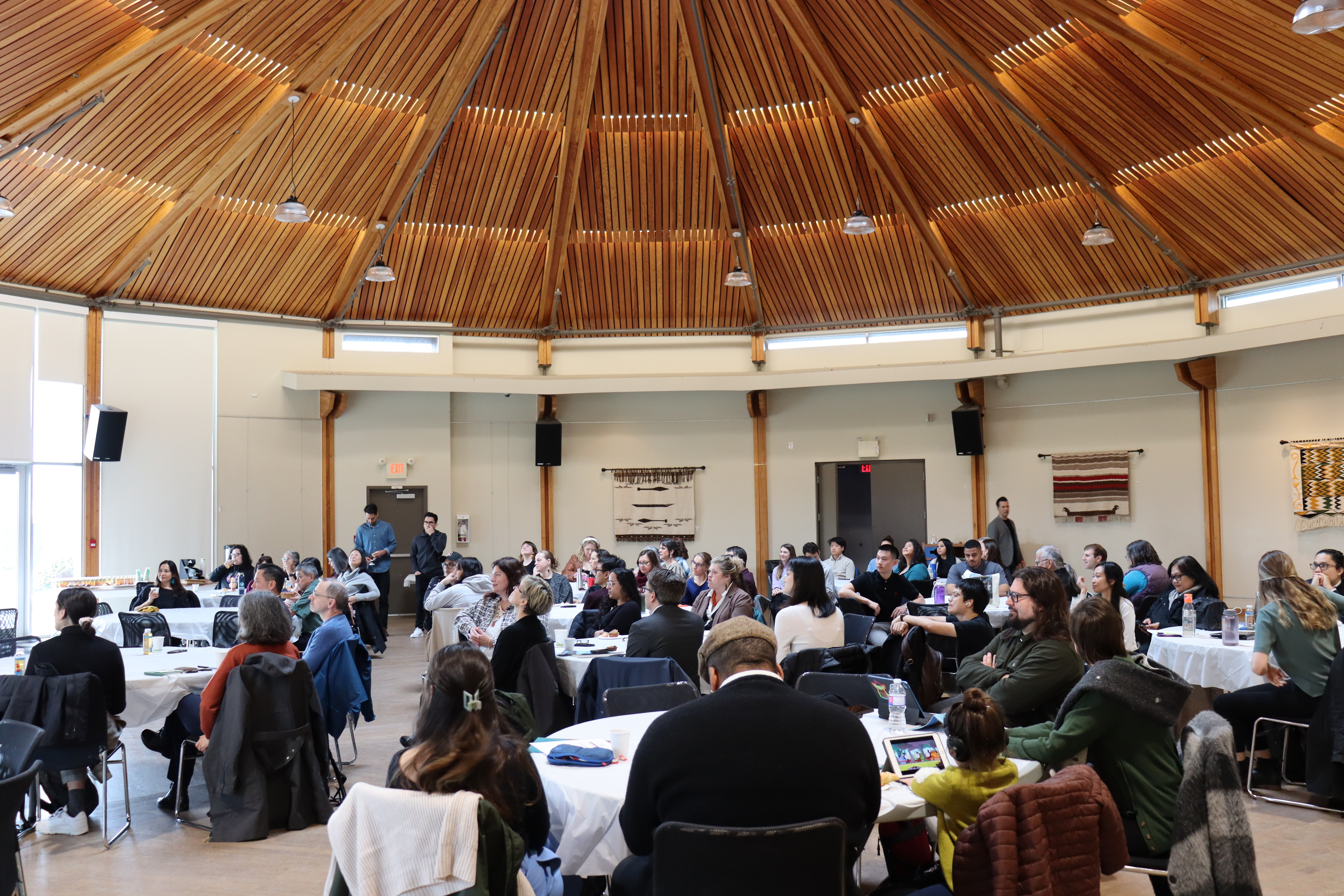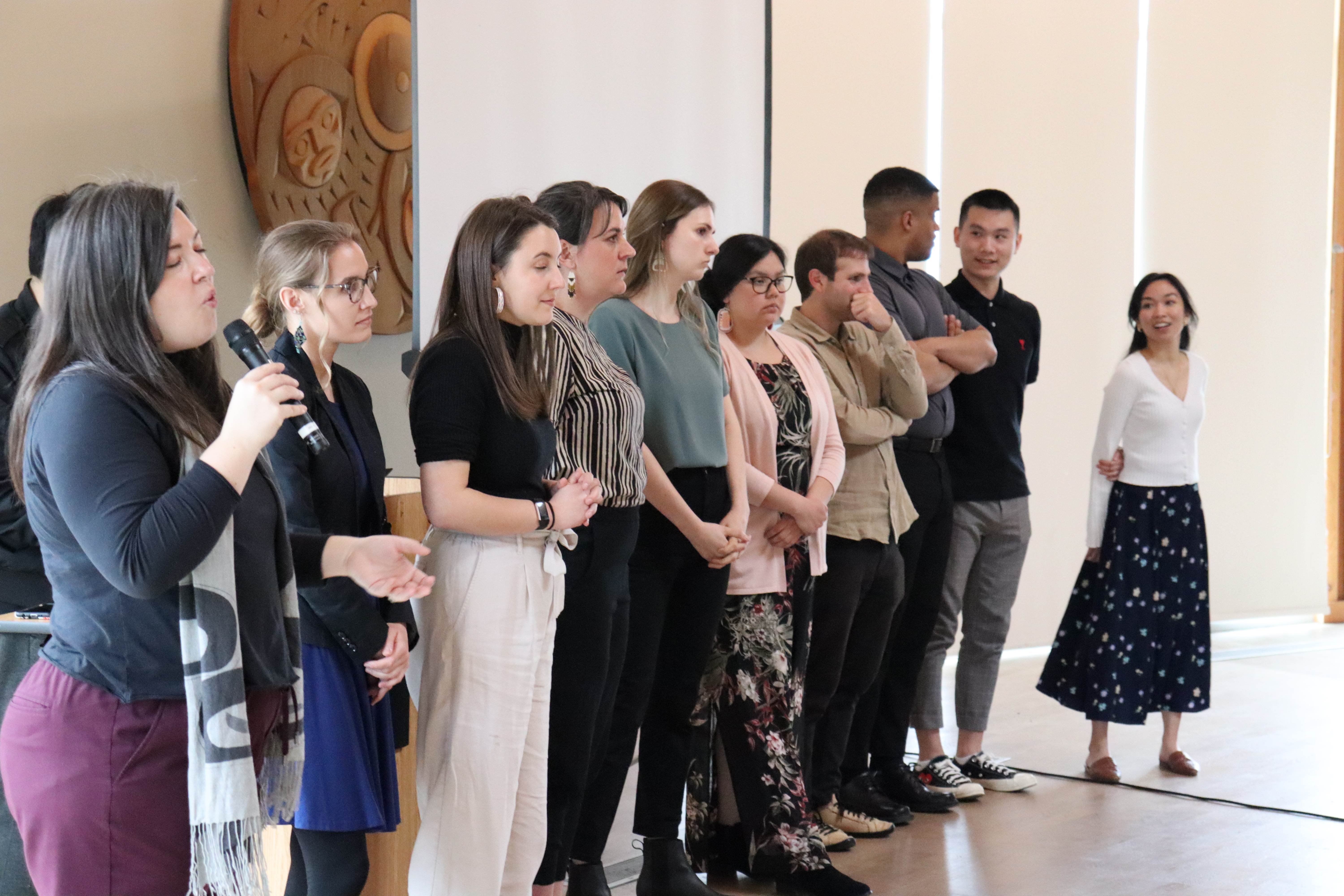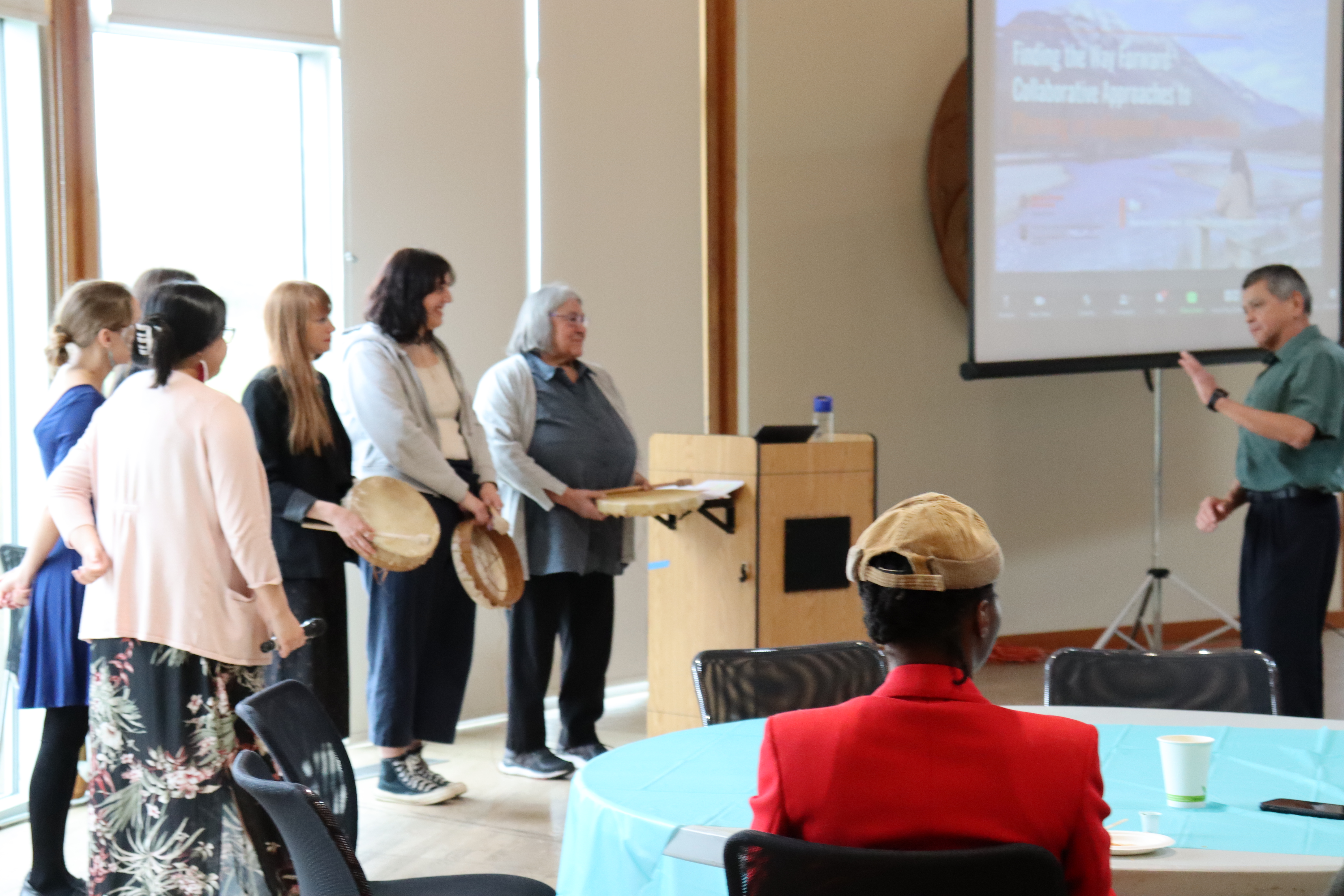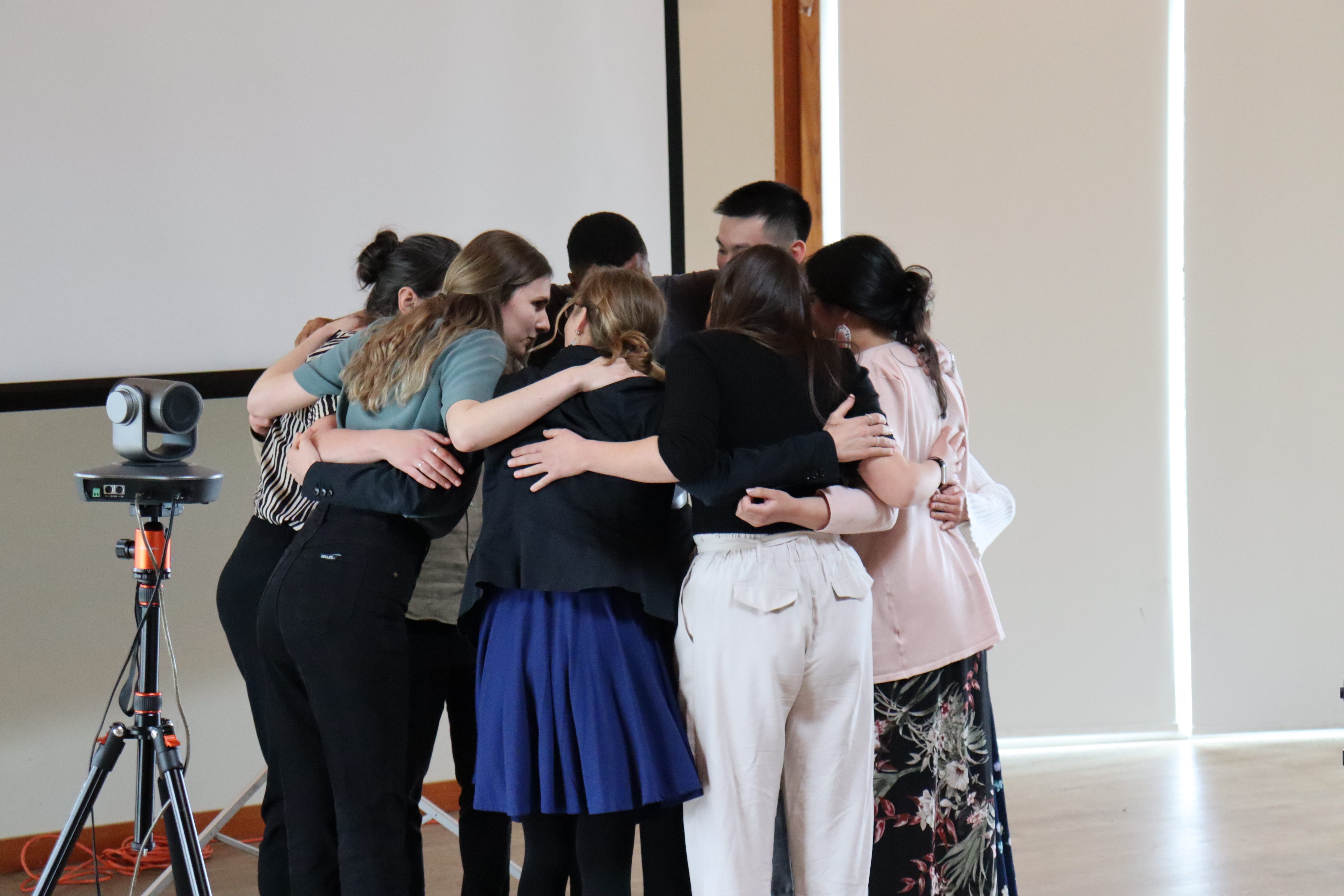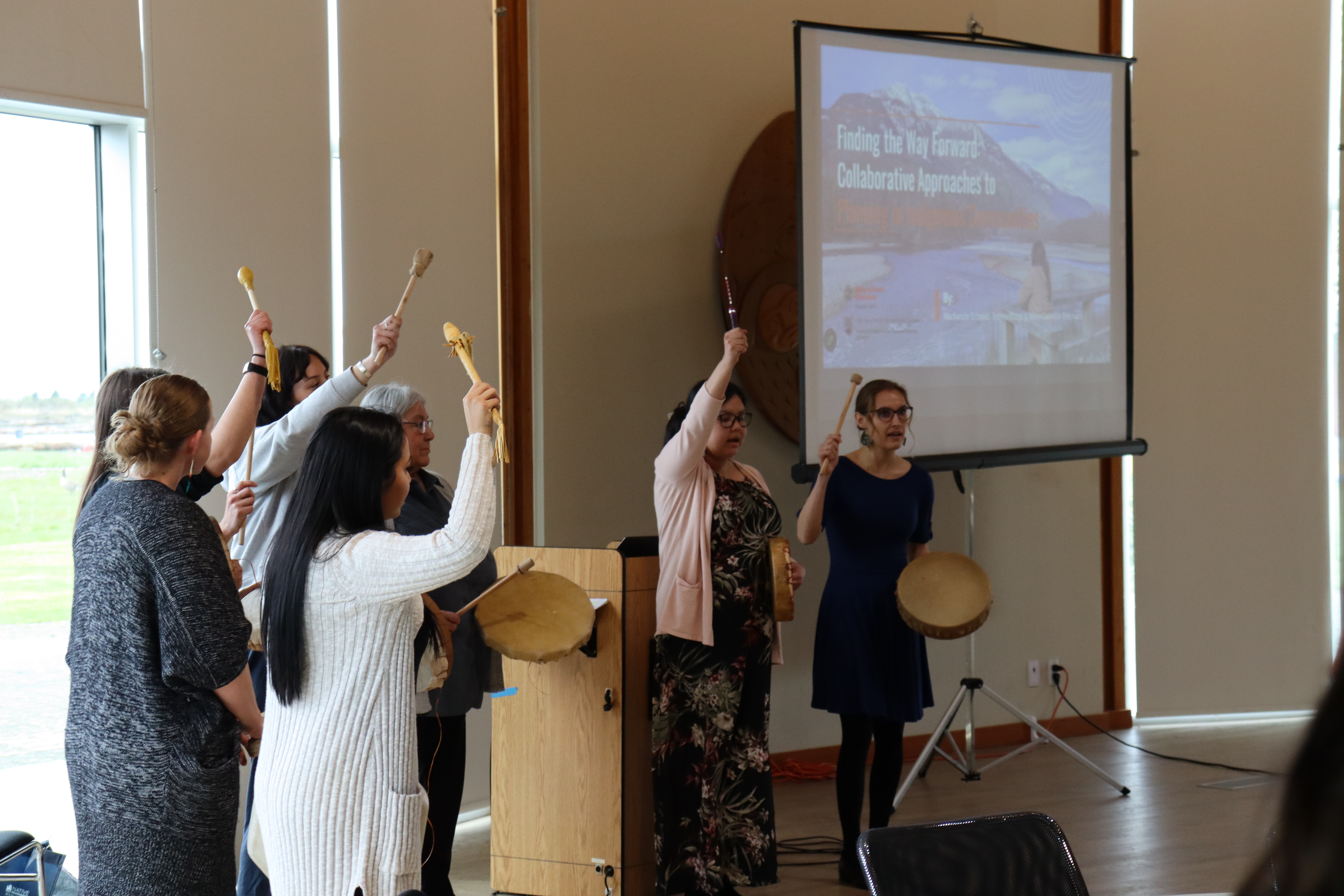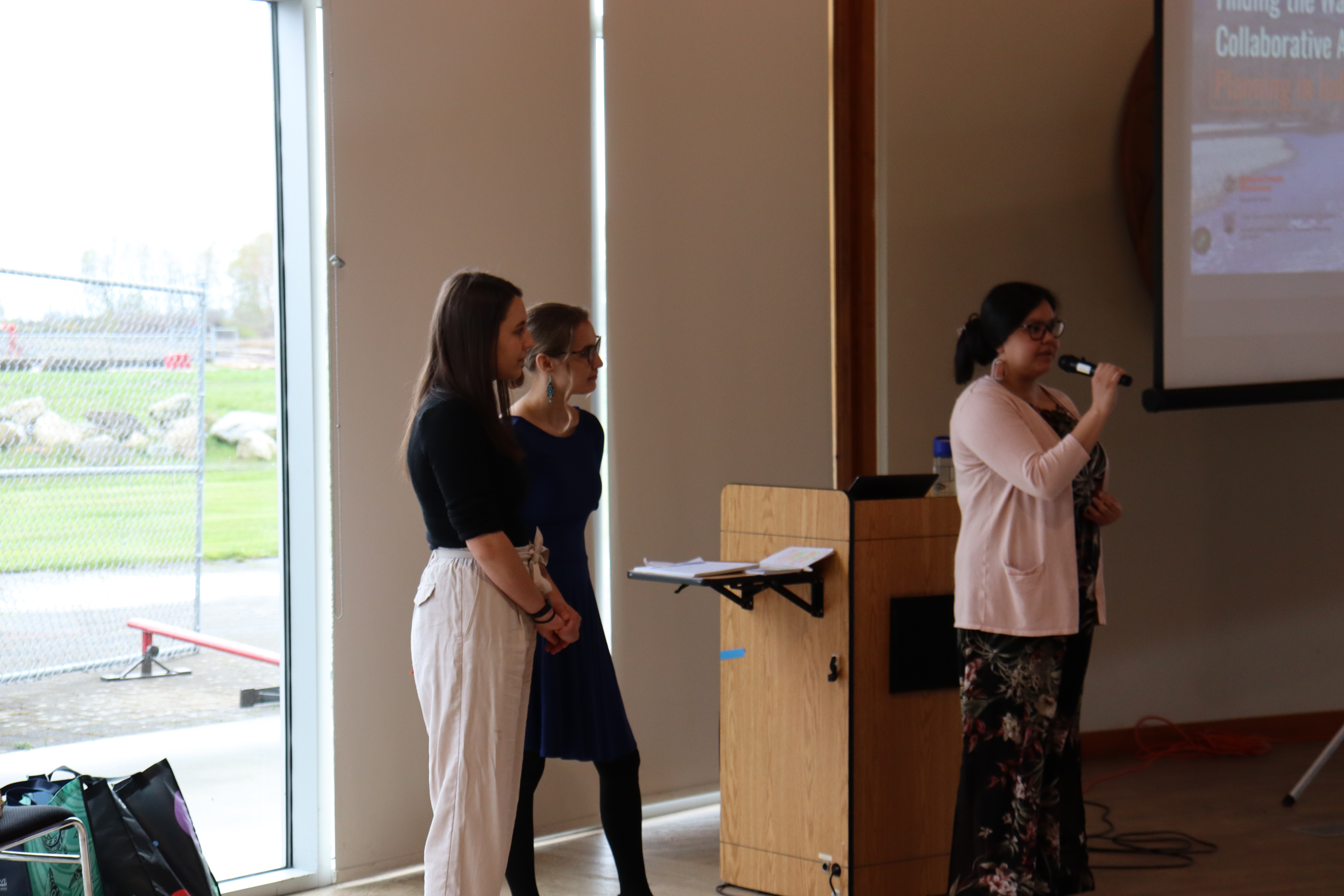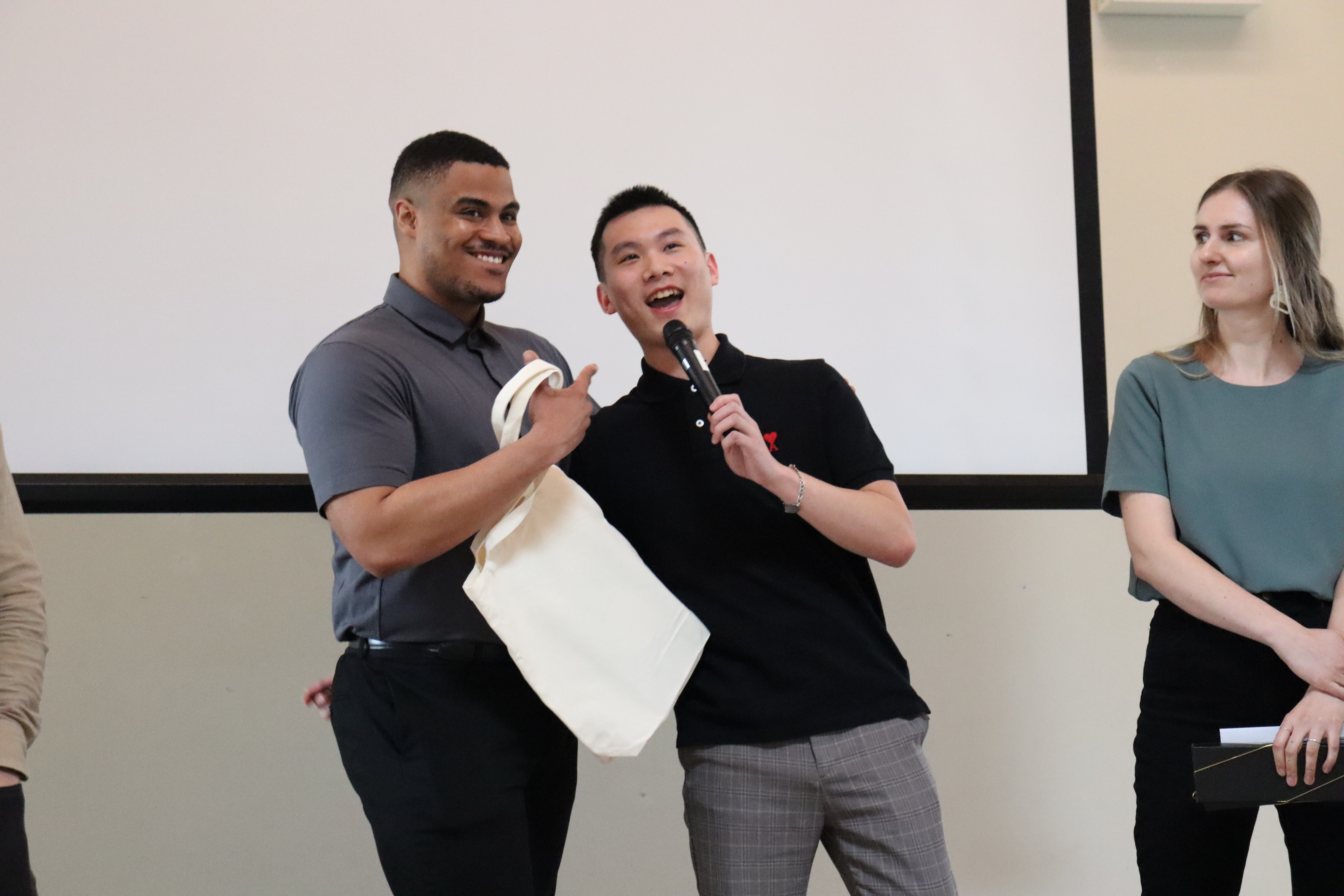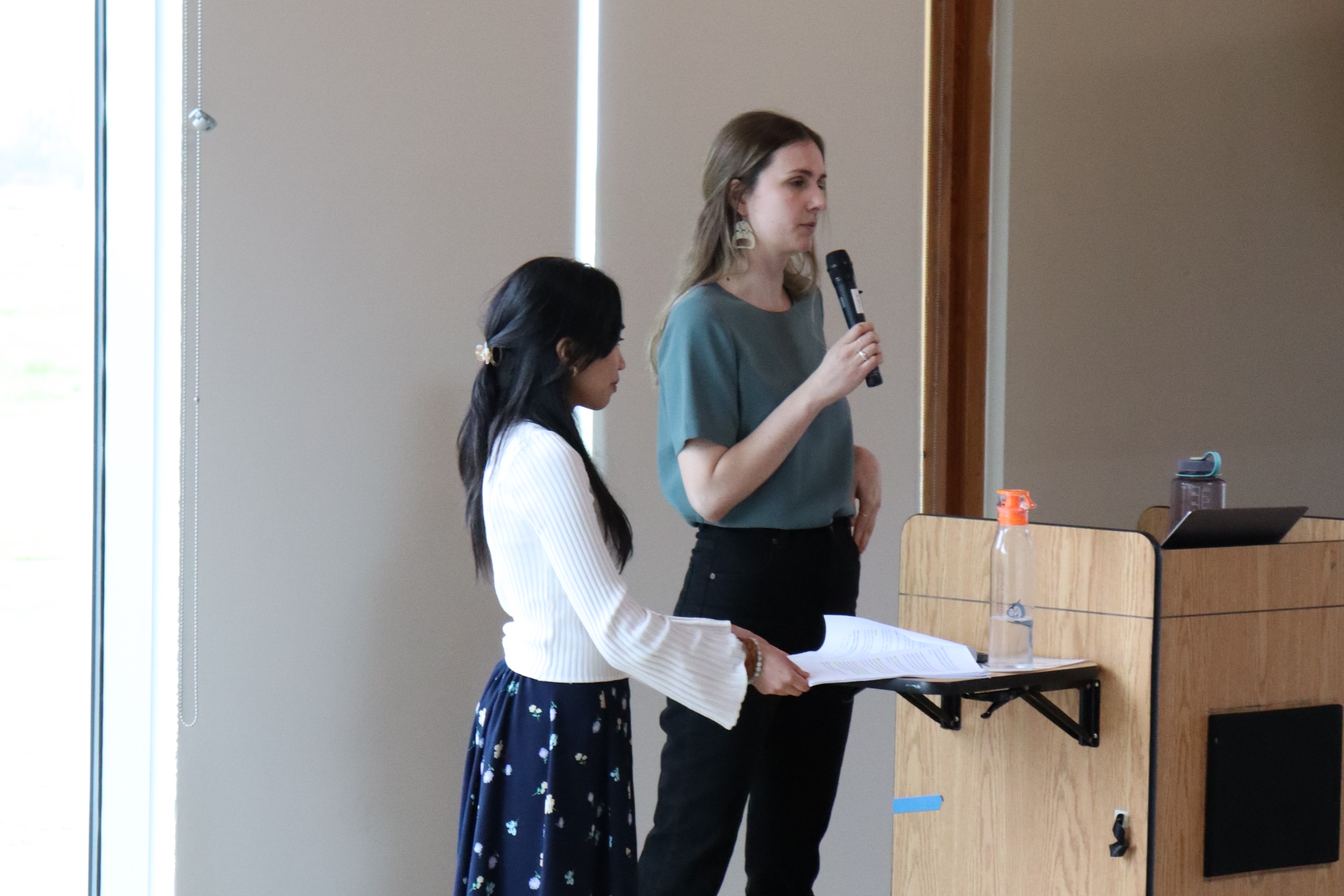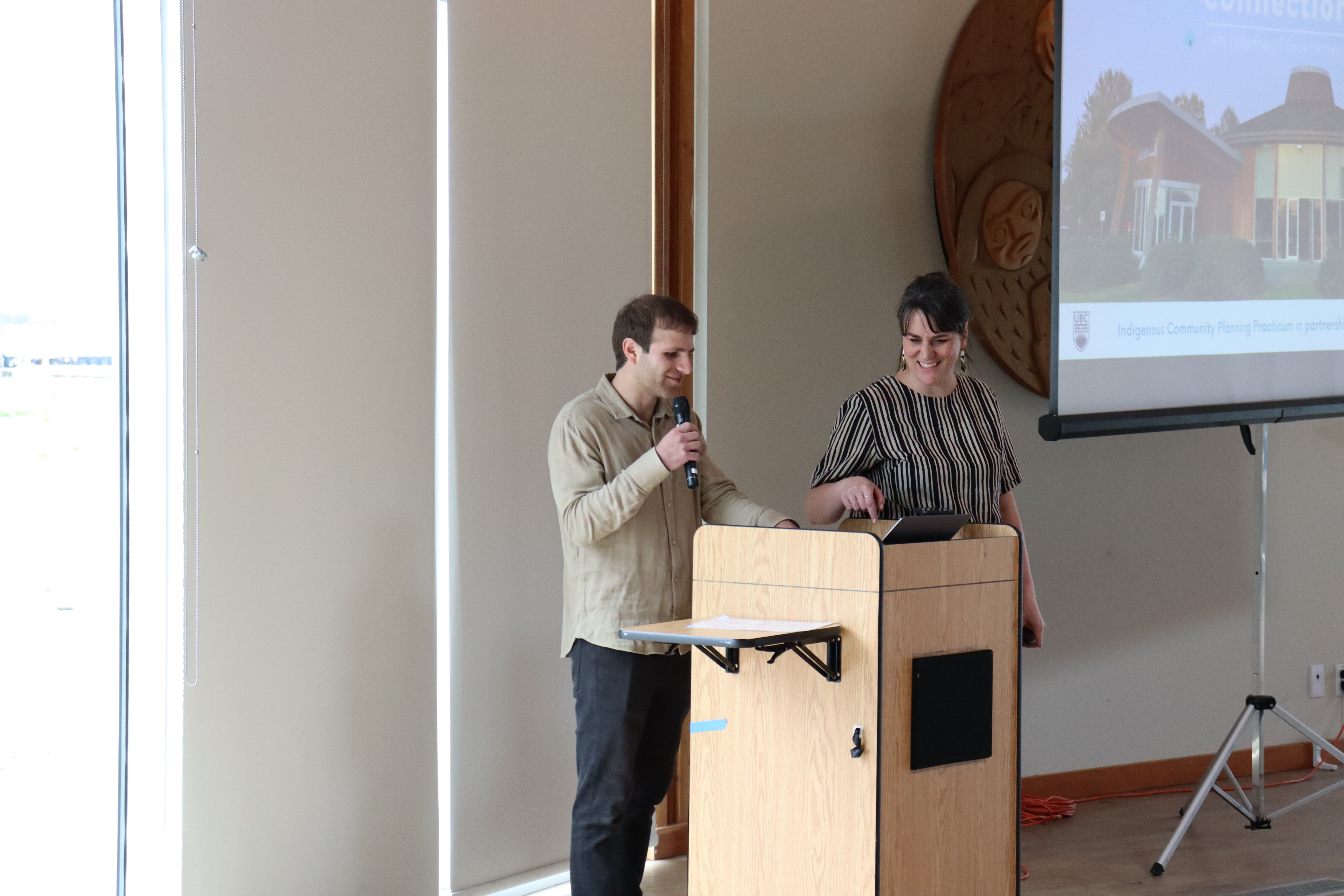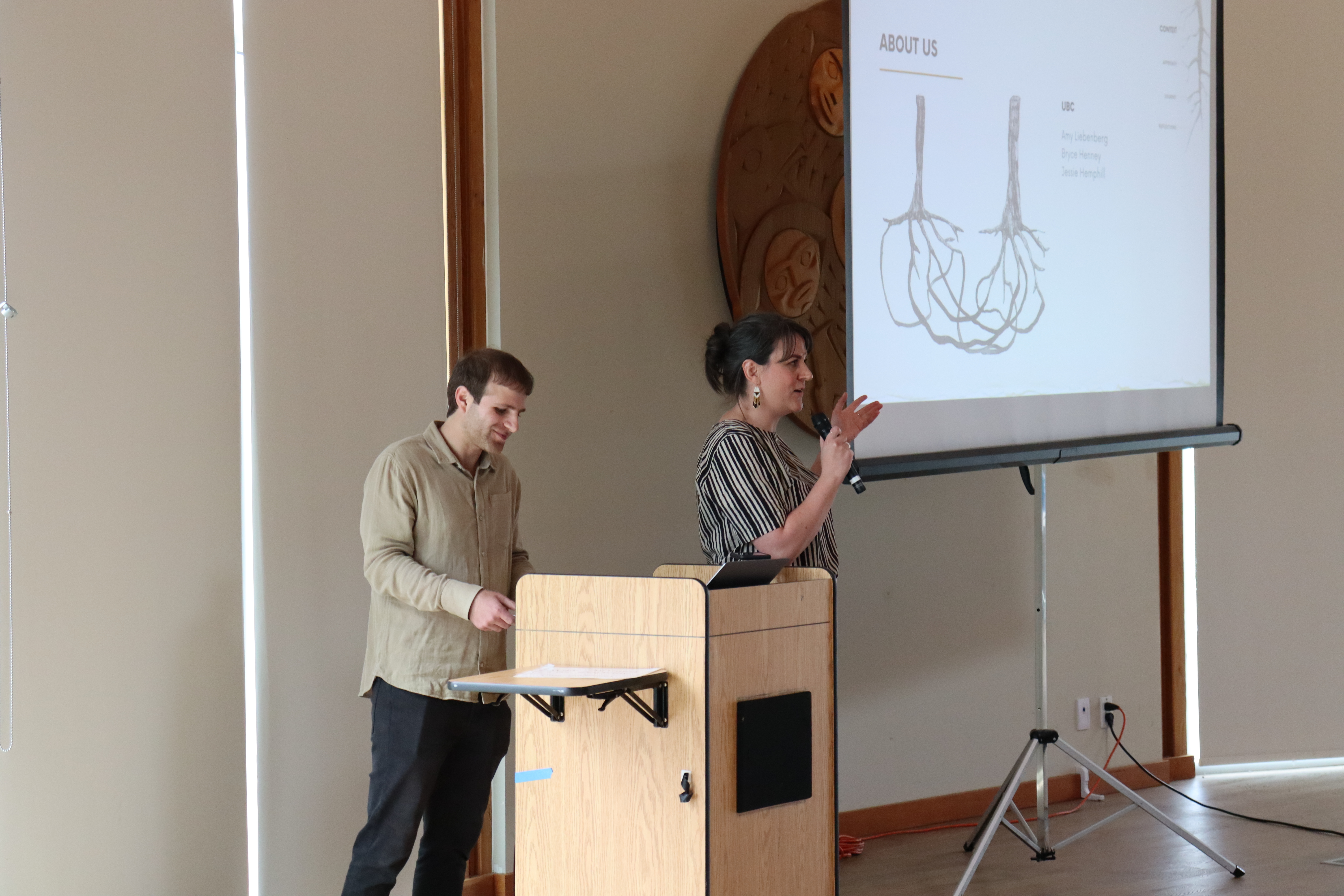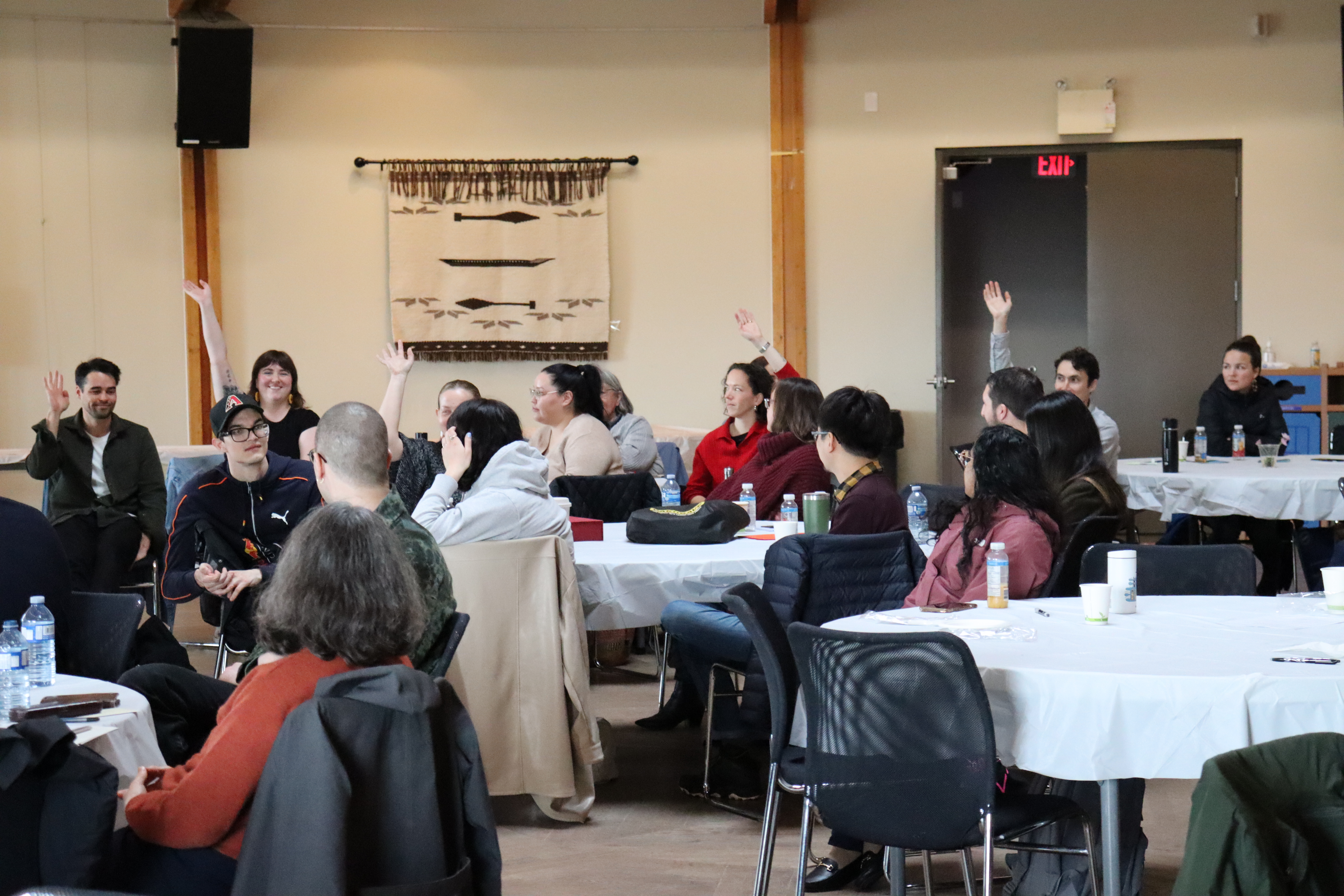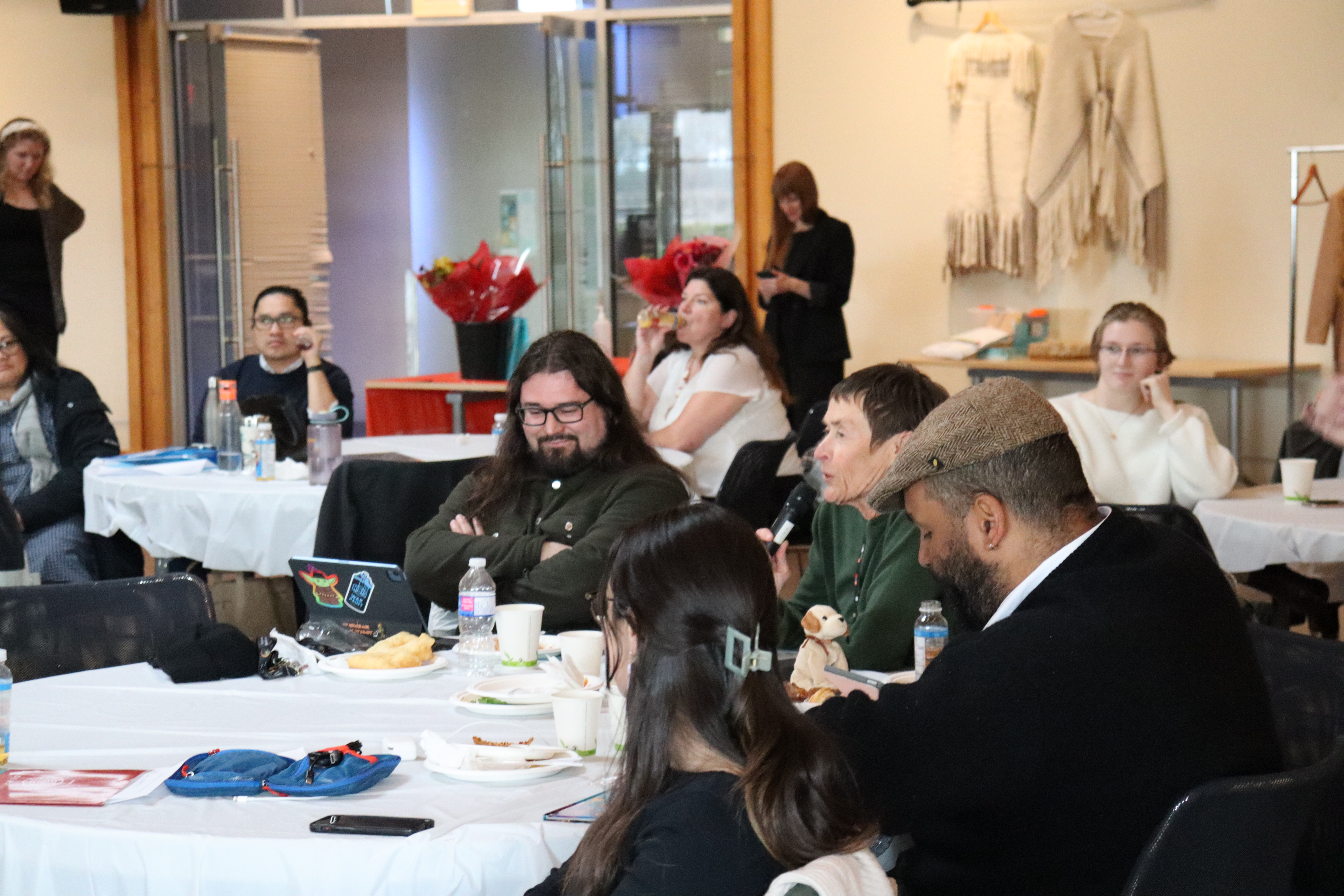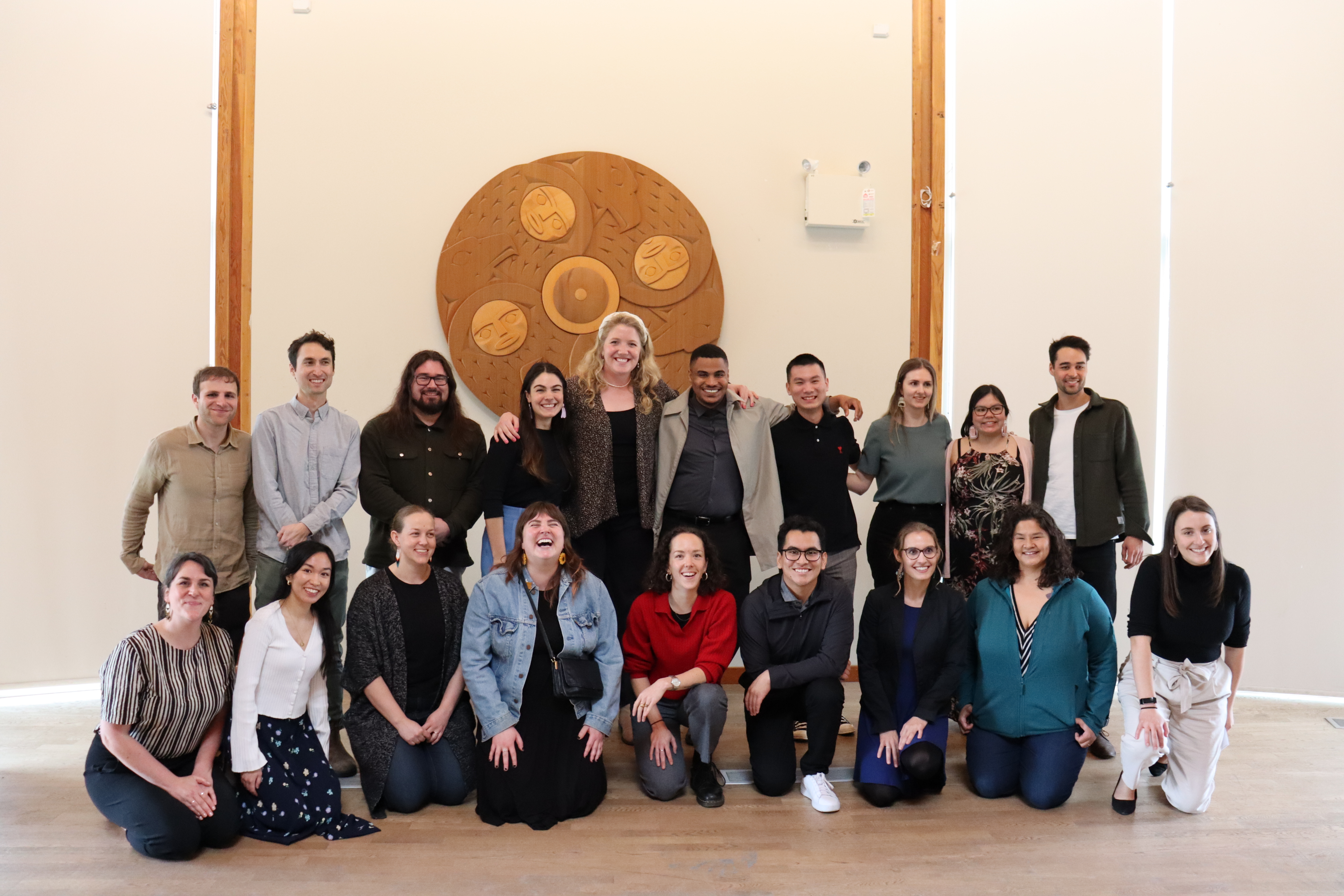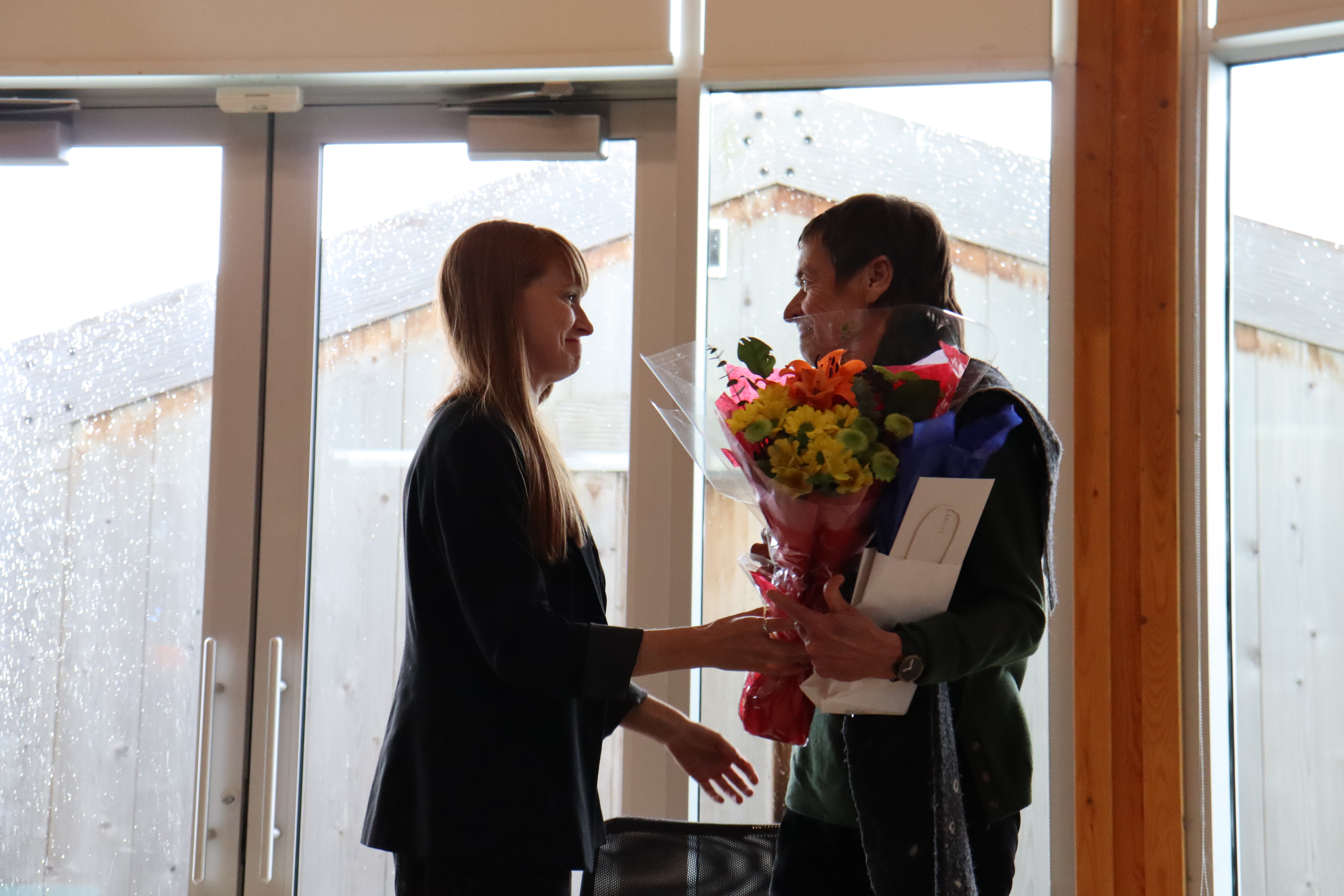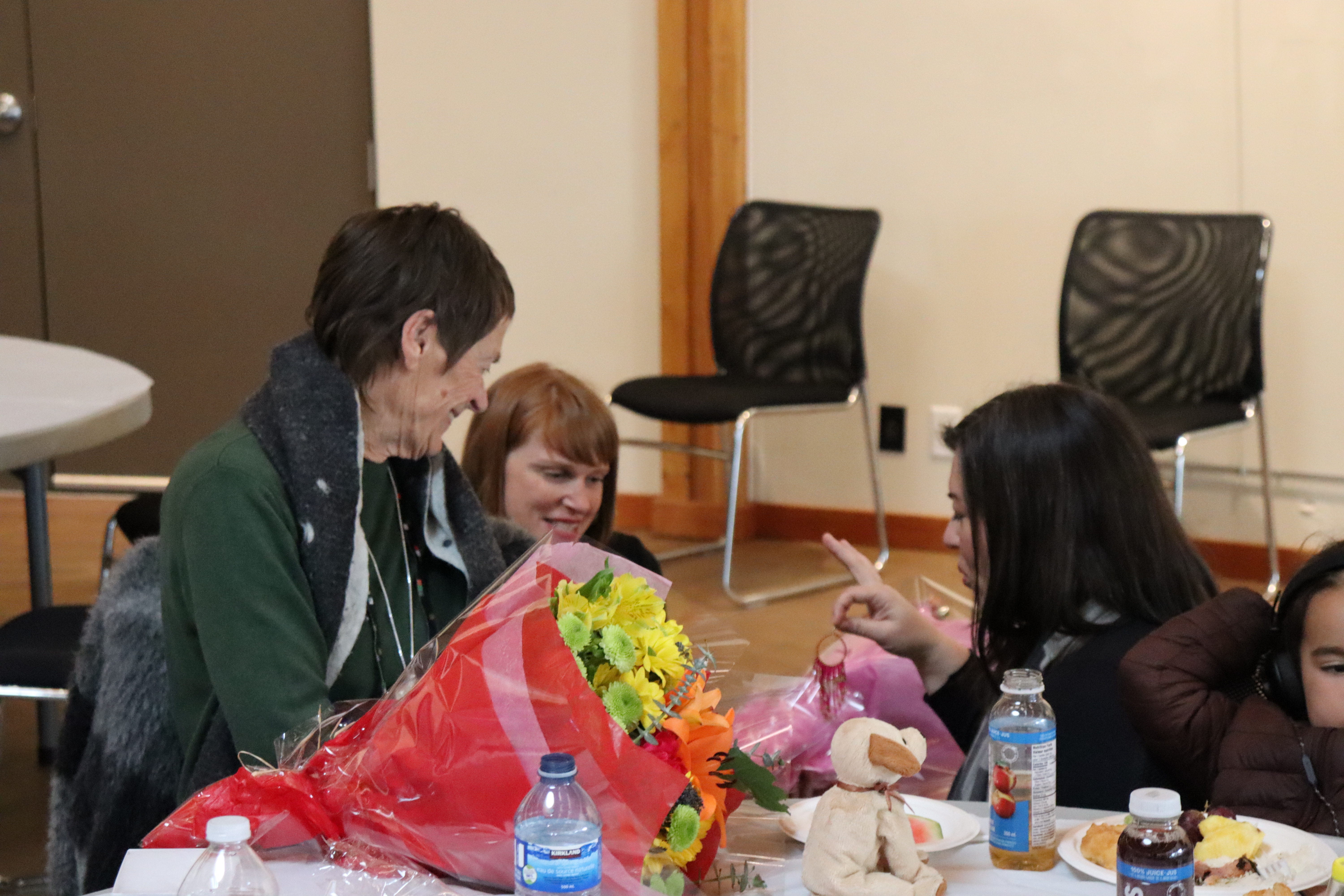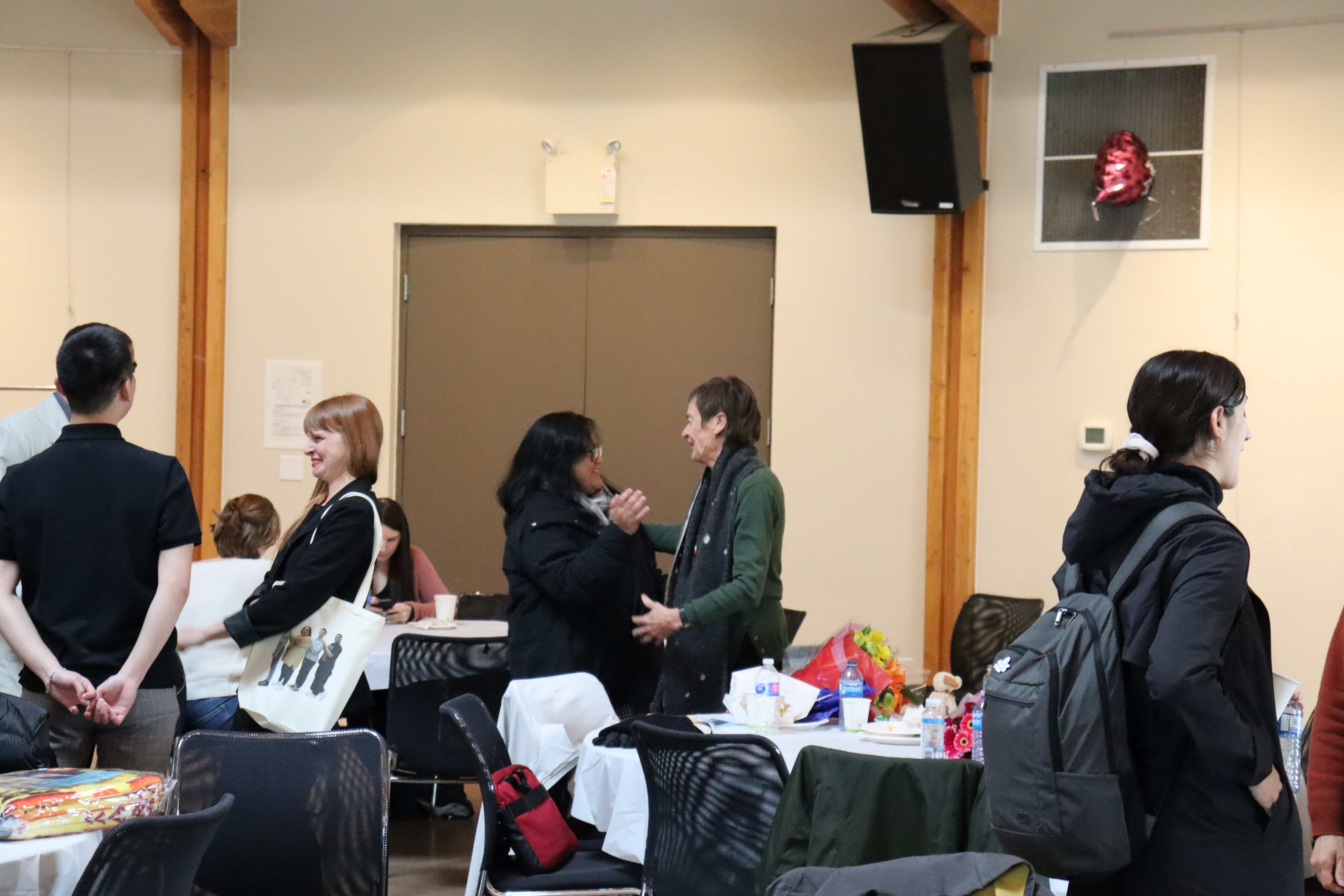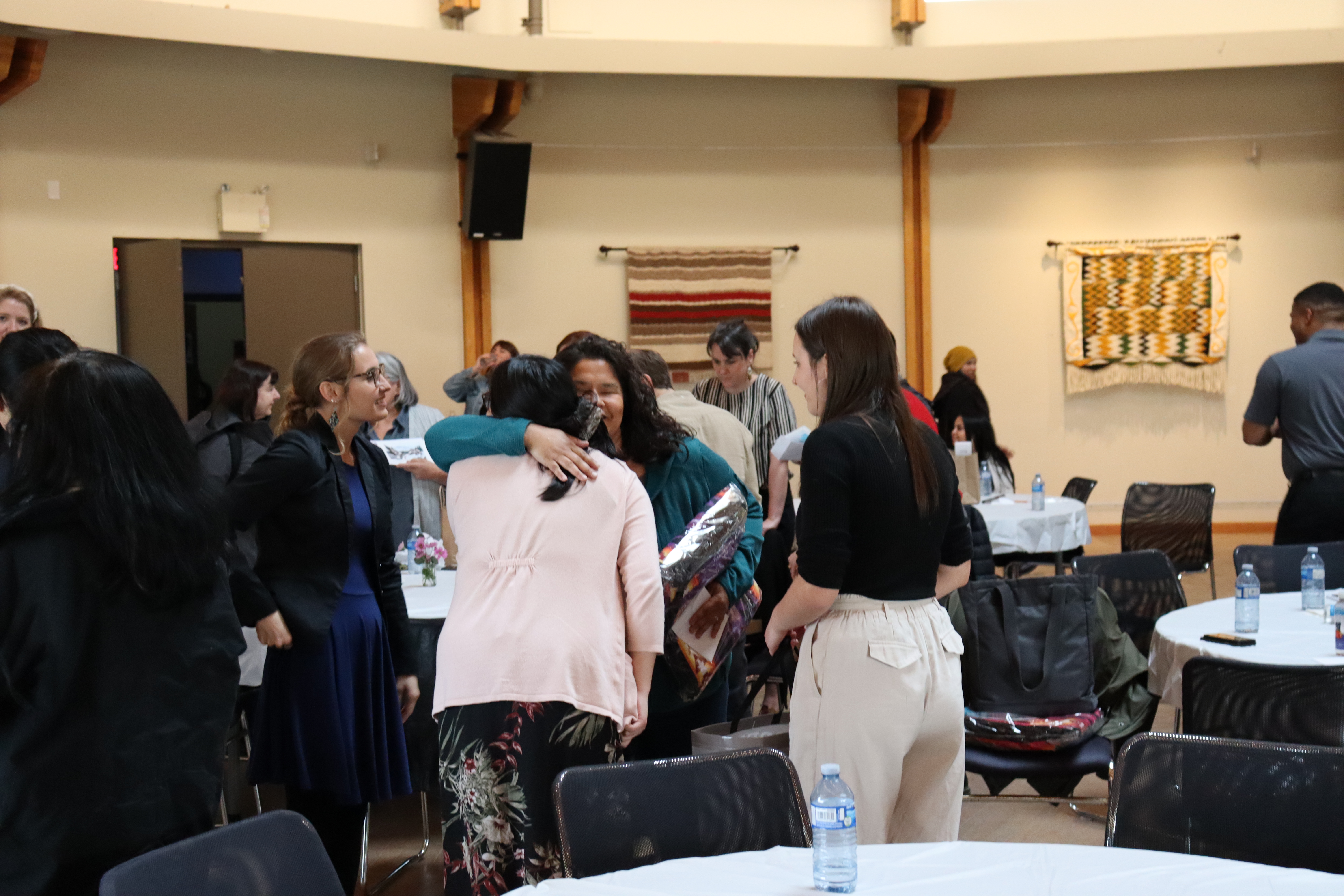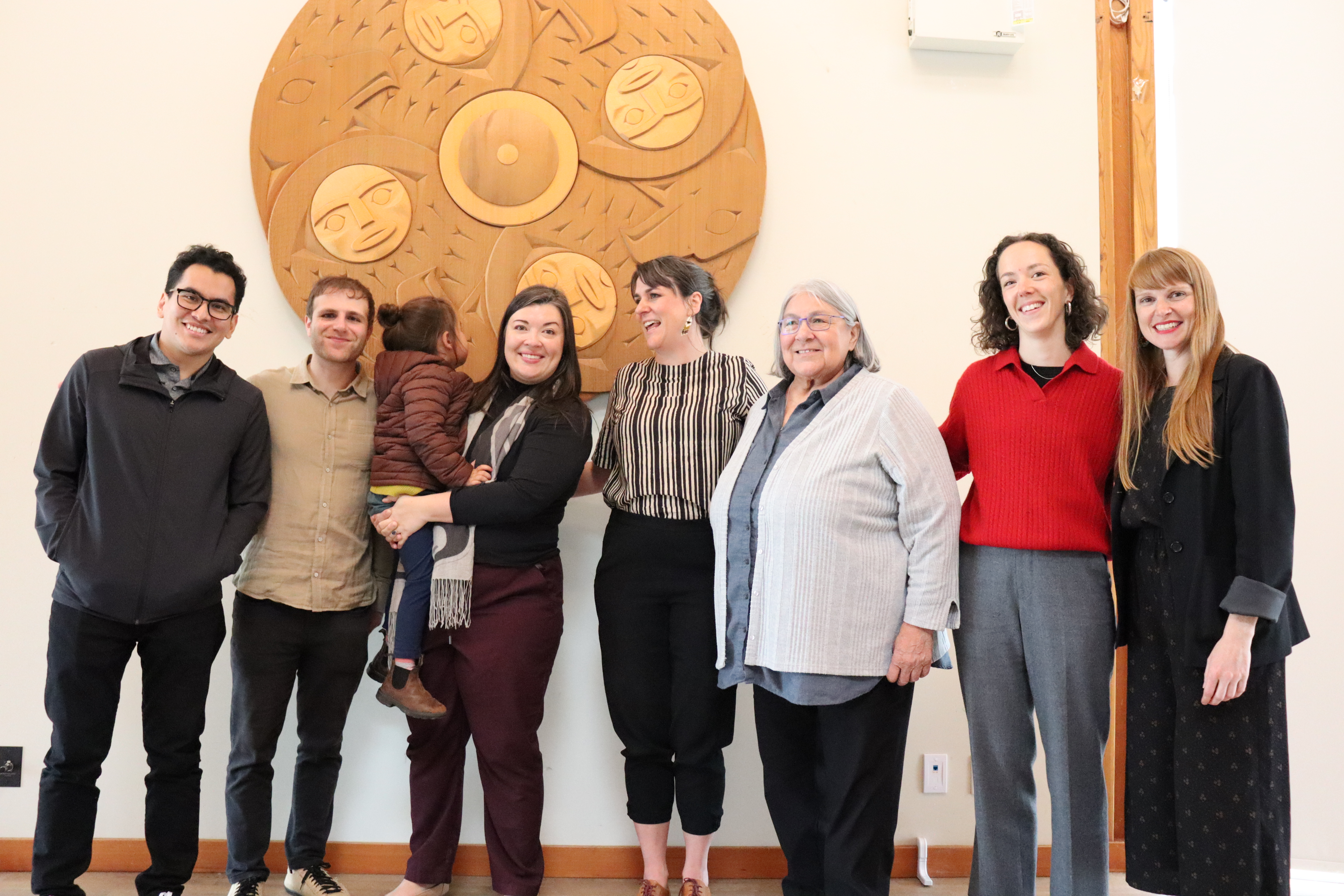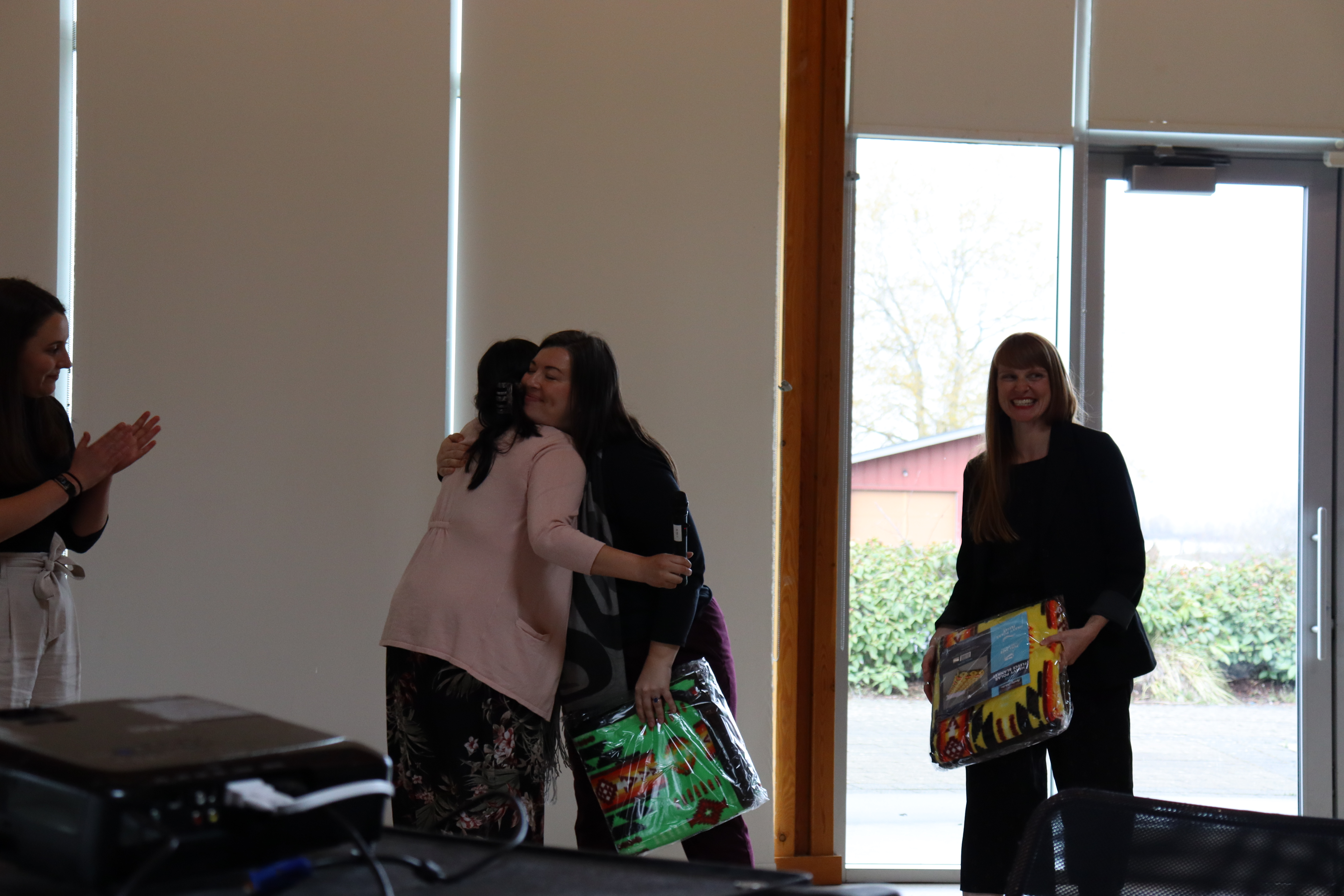April 28, 2023
On April 18, Musqueam welcomed SCARP's Indigenous Community Planning students, as well as faculty, partnering Nations, family, and invited friends, to gather in Musqueam's Cultural Centre. There we heard the findings and plans from 2023's ICP cohort, who had, throughout the year, teamed together to create plans in partnership with local Indigenous nations to consider challenges and projects they face today.
SCARP recognises that we work, learn, and grow on the unceded lands of the Musqueam people. We also recognise that recognition of this fact is only the beginning of our due diligence. SCARP also honours and cherishes its partnership with Musqueam Indian Band, and also all partnerships arising from SCARP Indigenous Community Planning.
Within this space, even a cloudy day washes the room in bright daylight, and its circular format naturally brings a feeling of gathered community. Throughout the day, there were words of recognition, gestures of thanks, and renewals of commitment and partnership.
Each presentation prioritised introducing their partner nations and elaborating on their stories. Together, we heard not only of the work of each student team and possibilities for the future, but the context of each Nation’s lands, history and current challenges, culture and traditions, and primers on their lenses on the world.
The ICP students, their partners, and their partnerships
A sense of continuity

